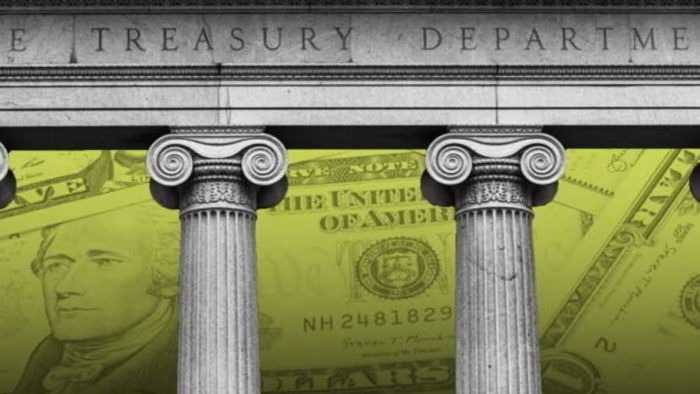Unlock the Editor’s Digest for free
Roula Khalaf, Editor of the FT, selects her favourite stories in this weekly newsletter.
The share of electronic trading in the nearly $30tn Treasury market has fallen to its lowest level in eight years, as exotic Wall Street bets on US debt push investors to make more trades manually.
Almost half of all trading in Treasuries this year has been done by one-to-one messaging or over the telephone in transactions too large and complex to be conducted without human involvement — the biggest share since 2017, according to industry research group Crisil Coalition Greenwich.
The comeback of so-called voice trading — which had been falling as a share of overall Treasury trading for decades — reflects the growing importance of what are known as package trades, often conducted by hedge funds.
“The volume growth [in voice trading] is coming in large part from these large package trades that are executed manually,” said Kevin McPartland, Coalition Greenwich’s head of market structure and technology research.
Academics and analysts say hedge funds are among the primary users of package trades, which include strategies such as the basis trade and interest rate swaps that demand direct contact between the two sides of a transaction.
“The increased volume of package trades is very likely ascribable to hedge funds that are arbitraging the cash-futures basis and now sizeable swap spreads,” said Darrell Duffie, a professor at Stanford University who is an expert in Treasury market structure.
“As to why this has generated relatively more voice trades than electronic trades . . . I would guess this is [because] the three legs of basis trades are executed separately,” he said.
Coalition’s data shows that for this year to the end of October, 54 per cent of the notional value of Treasury trading was placed electronically, down from a peak of 67 per cent in the full year of 2019.
Instead, a growing share of Treasury trading has involved complex, multi-step wagers such as the highly leveraged hedge fund strategies that many analysts say exacerbated the turmoil that hit the Treasury market after US President Donald Trump’s “liberation day” tariff blitz in April.
Manual trading had been in decline for decades, as advances in technology enable more and more transactions to be done by machines interacting with other machines.
But the growth of electronic trading is happening at a slower pace than the growth of the overall market. Voice trading, meanwhile, has started to grow more quickly.
It is commonly used in the basis trade, for example, in which hedge funds exploit differences in price between a cash Treasury bond and its equivalent futures contract. While such differences tend to be small, hedge funds borrow heavily in short-term lending markets to fund their bets, turning small differences into large profits.
The complexity and the pricing of these transactions mean that they are typically done over the phone or through messaging chats.
Since 2020, Coalition Greenwich has calculated the breakdown of trading by measuring the volume at big electronic trading venues such as Tradeweb and Bloomberg, as well as trading conducted directly between banks and clients against the total value of Treasuries traded.
The use of electronic trading on Wall Street has been gaining ground for decades, initially with the buying and selling of equities. This shift has given rise to so-called non-bank liquidity providers such as Citadel Securities and Jane Street. These firms have captured market share at the expense of large investment banks such as Goldman Sachs and JPMorgan Chase, which had traditionally dominated Wall Street market making.
“We’re seeing growing demand for new ways to access electronic liquidity, with trade sizes increasing,” said Michael de Pass, global head of rates trading at Citadel Securities.
“That being said, our clients continue to want to execute larger trades with us via voice and that requires a strong human element of trust and comfort. This is a dynamic that we believe will continue to exist in the market.”
Fixed income markets, including the giant Treasury market, have been slower to embrace electronic trading because of their more opaque pricing systems and complex structures. While a company will typically have just one traded stock, for example, it may have multiple tradeable bonds of various maturities.
Nevertheless, the parameters of what can be done electronically have expanded. Two decades ago, a rough rule of thumb was that Treasury trades of more than $50mn needed to be done over the phone. This has since swelled to about $250mn.
Platforms such as Tradeweb say the trend towards electronification is still well under way in the Treasury market.
Bhas Nalabothula, head of US institutional rates at Tradeweb, said the volume of Treasury trading conducted on the platform had grown fivefold since 2017, while turnover on the total Treasury market had doubled over the same period.
“The trend towards more electronic trading in Treasures is unmistakable — it is a one-way train and there is no going back,” he said.
